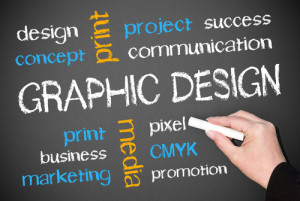
A graphic design degree opens up a world of creative opportunities for those who are passionate about visual communication. With the growth of technology and the increasing demand for appealing visuals in various industries, graphic design has become a more crucial element than ever in shaping the way people perceive and interact with brands, products, and services.
From advertising and marketing to video games and web design, a graphic design degree can lead to numerous exciting careers for aspiring creatives. Let’s explore some of the top job roles that you can pursue with a graphic design degree and provide insights into the skills and qualifications that can help you stand out in the job market.
Understanding Graphic Design Degrees
Graphic design degrees offer a comprehensive education that combines technical and creative skills to prepare students for a wide range of careers in the industry. By exploring various aspects of design (such as typography, color theory, and layout) students develop a strong foundation in design principles which they then learn to apply effectively across various media.
Types of Graphic Design Degrees
There are several types of degrees available for those pursuing a career in graphic design, such as:
- Associate Degree: Usually a two-year program designed to build a foundational understanding of design principles and software, suitable for entry-level positions or as a stepping stone to a bachelor’s degree.
- Bachelor’s Degree: A four-year program that delves deeper into design concepts, techniques, and software, preparing students for a broader range of graphic design careers.
- Master’s Degree: An advanced two-year program for those seeking specialization in a specific area of design or looking to advance their career in leadership roles or academia.
Core Skills Developed
Graphic design degrees focus on various skills to help students succeed in the industry. Some of the core skills developed throughout the program include:
| Skill | Description |
|---|---|
| Design Principles | Understanding essential design elements such as balance, contrast, and hierarchy to create visually appealing and effective designs. |
| Typography | The art of arranging type, including font selection, style, and arrangement to effectively communicate information and create visual interest. |
| Software Proficiency | Mastering design tools such as Adobe Creative Cloud, including Illustrator, Photoshop, and InDesign, to create, edit, and finalize designs. |
| Project Management | Organizing and managing projects effectively, working within deadlines, and delivering designs that meet client expectations. |
| Communication | Ability to collaborate with clients and team members, presenting design ideas and responding to feedback to create a final product that meets the needs of the project. |
With a solid foundation in these core skills, graduates of graphic design programs are well-prepared to pursue a variety of career opportunities such as graphic designer, creative director, UX designer, and more.
Career Paths in Graphic Design
Graphic design is a broad field, offering many potential job opportunities. Here are some of the most common career paths for graphic design graduates.
In-house Designer
In-house designers work for a specific company, creating various marketing materials and collateral to support the company’s branding efforts. These can include print materials, such as brochures and posters, digital materials like email templates, and social media graphics. In-house designers have a deep understanding of the company’s brand guidelines and visual identity, and they collaborate with different departments on a wide range of projects.
Freelance Designer
Freelance designers work independently, managing their own schedule and clients. They may offer various design services such as branding, illustration, and print or digital materials. As a freelance graphic designer, you will need strong communication, negotiation, and self-promotion skills to maintain a steady stream of projects and establish long-term relationships with clients.
Advertising and Marketing
Graphic designers play a crucial role in advertising and marketing, working on campaign visuals, social media graphics, and other promotional materials. They may work for an advertising agency or within the marketing department of a company. Their main goal is to create engaging visuals that effectively communicate the brand message and drive customer engagement. A notable career within this area is Marketing & Advertising Design.
Digital and Web Design
Digital and web design is another popular career path, encompassing the creation of websites, apps, and interactive experiences. Web designers create the layout, visual elements, and overall user experience of digital products, often in collaboration with web developers. Specific roles in this field include User Experience (UX) Designer and User Interface (UI) Designer, who focus on the organization, structure, and aesthetics of digital interfaces.
Additional Opportunities
Teaching and Academia
With a graphic design degree, you can also explore opportunities in teaching and academia. Becoming a lecturer or professor at colleges and universities allows you to share your knowledge and expertise with the next generation of designers.
Many institutions offer courses and degree programs in graphic design, and your background in this field would qualify you to teach topics such as typography, design principles, and digital media. Additionally, pursuing advanced degrees in graphic design can open up research and academic opportunities.
Art Direction and Management
Another career path for graphic design degree holders is art direction and management. As an art director, you’d be responsible for overseeing the visual aspects of projects, guiding creative teams, and ensuring client expectations are met.
Roles in design management and project management are also available, allowing you to apply your organizational skills and creativity to lead projects and ensure timelines, budgets, and client requirements are met.
Illustration and Animation
A graphic design degree can also open doors to careers in illustration and animation. Combining your design skills with storytelling, you can create visual narratives for various media formats, including children’s books, comics, and advertising campaigns.
In the field of animation, you can apply your skills in areas such as character design, mock-ups, and storyboarding for industries like entertainment, gaming, and advertising. As an illustrator or animator, your creativity and unique style could set you apart and help you build a successful career in the visual arts.
Enhancing Your Career Prospects
As a graphic design degree holder, there are some key strategies that you can implement to further enhance your career prospects. These include networking and mentorship, building a strong portfolio, and continuing education.
Networking and Mentorship
Forging connections within the design community can have a significant impact on your career. Attending industry events, joining professional organizations, and participating in online forums can help you grow your network. Seeking out a mentor in the field can provide valuable guidance and insights as you advance in your career.
Building a Strong Portfolio
Arguably the most important aspect of showcasing your skills as a graphic designer is the creation of a compelling portfolio. This should include a variety of work samples that demonstrate your design abilities, creativity, and versatility.
To improve your portfolio, consider:
- Working on personal projects
- Collaborating on team projects
- Participating in design competitions
- Offering pro-bono services to non-profit organizations
These activities will not only help you build a comprehensive portfolio but will also provide valuable hands-on experience in different professional contexts.
You’ll absolutely want a personal website to showcase all this!
Continuing Education
Graphic design is an ever-evolving field, so it’s crucial to stay up-to-date with the latest trends, tools, and techniques.

To ensure you remain competitive in the market, consider:
- Enrolling in workshops and courses
- Attending industry conferences and events
- Subscribing to design publications
- Following influential designers and industry leaders on social media
By engaging in continuing education, you will constantly expand your skillset and knowledge, increasing your value to potential employers and clients.


